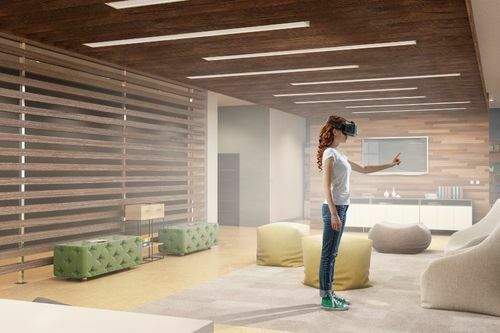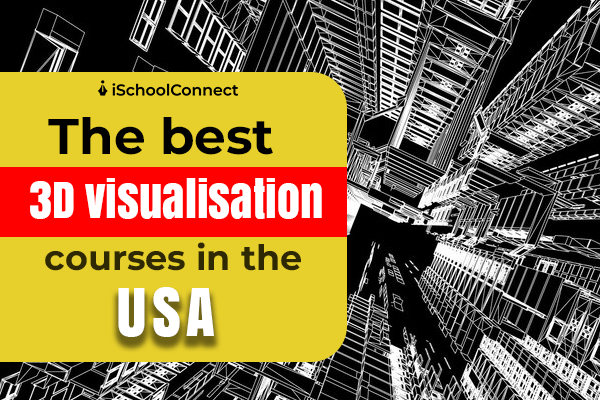Table of Contents
3D visualization is a way to produce digital 3D representations of real-life objects. Its sole purpose is to provide a digital presentation of what that object will look like from different sides and angles. The phrases 3D graphics, 3D rendering, computer-generated imagery (CGI), and other terms are synonymous with this course. All of them refer to the process by which graphical content is created using 3D software.
It’s a technology that has achieved mainstream status over the last few decades and has evolved into one of the most reliable options for producing high-quality digital content.
Difference between 3D visualization and 3D design or development
There are some widespread misconceptions about the word. As previously stated, it is the process through which graphic content is formed, with visual content as the result (i.e., images and animations). It differs from 3D design or 3D development, which are terminology used to describe the creation of content like computer-aided design (CAD) files, which are produced by engineers or industrial designers and intended for manufacturing uses.
While creating 3D visualizations, 3D artists may use CAD, but the finished products are more than just CAD files; they are dynamic graphics that combine technical expertise and artistic skill.
Where do we use 3D visualization?

The production of high-quality digital content has become increasingly important as 3D visualization has been widely popular in recent years. This technology is being used in a variety of industries, including manufacturing, engineering, architecture, entertainment, and video gaming industries.
The top three sectors that use 3D visualization techniques are listed below.
Product creation, production, and display
A 3D visualization is a useful tool for showing stakeholders a prototype or the final product. Engineering-wise, it enables designers to picture the intended product in a real setting and obtain information about potential risks and errors so they can enhance the design process and pursue innovations.
In terms of marketing, 3D product display can distinguish the product. Comparatively speaking, creating a 3-dimensional demonstration of real things and items is considerably simpler than taking innumerable images.
In addition, we benefit from our ability to evaluate the product from every viewpoint and note all of its merits.
Interior decoration and architecture
By accelerating and improving the work process in this field, 3D visualization software has a big impact on architectural and interior design.
With the aid of 3D visualization technologies, collaborative and digital engineering, quick production of building components, a reduction in process mistakes, presentation, and maintenance of projects are all possible.
Nowadays, clients are keen to see how their project will look even before the work begins.
In this instance, visualization gives consumers the chance to see the building’s layout, interior and exterior designs, lighting, texture, and geographic settings even before the creation process is complete.
Entertainment and media
With the use of 3D visualization technology, spectacular digital content can be produced for a variety of purposes, including games, movies, commercials, and music videos. Artists can now use their imagination to create lifelike characters by using this tool.
In addition to these industries, this technique is also employed in electronics, academic settings, the printing and publishing business, healthcare applications, and diagnostic planning, among other things.
3D visualizer Courses
3D Digital Visualization Bachelor of Fine Arts Degree (B.F.A.) from Berkeley university
- Duration- 4 years
- Location- New York
- Digital visualization is a major industry that is expanding rapidly across a wide range of commercial fields. As you develop the advanced skills, knowledge, and understanding of digital design and modeling that employers seek, you will learn to communicate architectural and graphical concepts and information using cutting-edge 3D modeling software tools in Berkeley College’s 3D Digital Visualization Bachelor of Fine Arts (B.F.A.) degree program.
BA (Hons) Digital Media Design: 3D Visualisation from Winchester university
- Duration- 3 years(full-time)
- Location- on campus(Winchester)
- You will get pre-approved for a Master’s degree at Winchester if you complete a Bachelor’s degree in the same university with honors. You must meet the entrance requirements for your selected masters in 3d visualization and submit your application by the end of March in your final year of study for your application to be considered.
Eligibility criteria to Pursue 3D visualization
- Regardless of stream, anyone with a high school diploma/certificate from an accredited institution is qualified to apply for the design programs.
- Candidates for PG admission must have completed grades 10+2+4.
- The applicants must have finished an undergraduate degree program in the required field for a master’s course.
- The candidates have to keep their GPA at 3.0 (83-86%).
- The eligibility criteria change according to admission rules and regulations for different universities.
Employment opportunities and the average salary for 3D visualizers
- Employers of 3D visualizers in the United States include Adidas, Evenstar Structures Corp., Makita U.S.A., Inc., and others.
- In the United States, a 3D visualizer makes up to INR 6,444,741 per year.
Future scope of 3D visualization

The immaculate architectural rendering and 3D rendering images we see today are produced using many digital tools, and it is anticipated that in the future, we will expand our use of virtual reality. The next big thing seems to be virtual reality(VR), which was once thought of as a part of science fiction and can now be used for real-time applications.
Now, designers and architects can create 3D representations of their work and use virtual reality to immerse their clients in the experience. Through digitally visualized content, the audience will have a unique experience looking at objects and places they know with a completely different outlook.
Did you find this blog informative? If so, please share your thoughts in the comments section below. Click here to contact us for more information on the 3D Visualizer course. We would be happy to assist you with your queries.
Key takeaways
- 3D visualization technology is used in different business sectors to provide high-quality graphic content, such as pictures, diagrams, and animations. It provides a realistic digital experience and can be used in different fields.
- Production of high-quality digital content has become increasingly important due to recent technological developments. Hence, there is a huge demand for 3D visualizers. You can find a 3D visualizer job in many industries, including manufacturing, engineering, architecture, entertainment, and video gaming industries.
- 3D visualization has lots of scope in the future. 3D visualizers will be able to create 3D representations of real-life objects and use virtual reality to showcase their work through a digitally-enhanced experience.
Liked this blog? Read next: The fourth industrial revolution- a bane or boon to society.
FAQs
Q1. Is 3D visualization expensive?
Ans- The cost of 3D visualization is determined by how complicated your project is. However, even the priciest ones offer a sizable return on investment. Customer opinion of high-quality 3D versus low-quality 3D differs significantly. Everything you do will have an impact on your project or product.
Q2. Which are the best 3D visualization tools for professionals?
Ans- Best professional 3D visualization tools are as given below:
Foyr Neo, Blender, SketchUp, Wings 3D, Autodesk, Keyshot, OctaneRender, Lumion, Revit, Cinema 4D, ArchiCad, VRAY.
Q3. Can I make a career as a 3D architectural visualizer?
Ans- An apprenticeship with a construction company is a good way to start in this industry. You can become a 3D visualizer by completing a design or architectural apprenticeship. To become an apprentice, you will need GCSEs in grades 9 to 4 (A* to C), or equivalent, in English and maths, plus an art and design subject.






